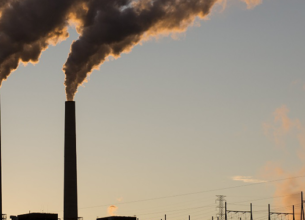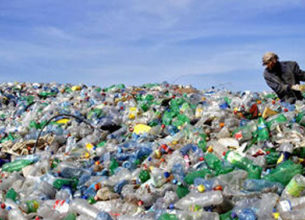VARANASI HAS ONLY ONE AIR QUALITY MONITORING
18, May 2019

Prelims level : EN8 Pollution
Mains level : GS3M - Conservation, environmental pollution and degradation, environmental impact assessment.
Why in News:
- Varanasi is being ranked as one among the top 3 most polluted cities in the world three years ago, a Right to Information request has found.
Details:
-
The Central Pollution Control Board’s 2015 dataset found Varanasi’s air quality to be
among the most toxic in the country. - It had only one air quality monitor capable of measuring particulate matter 2.5 and particulate matter 10 levels. Out of 227 days measured in 2015, the city had zero ‘good- air’ days and this was attributed to the heavy levels of industrial pollution.
- Biomass burning, vehicular emissions, brick kilns and diesel generator sets were also major contributors. Varanasi is one of the cities that is part of the National Clean Air Campaign, an initiative by the Union Environment Ministry to improve air quality in 100 cities by 20% at least by 2024. One of the commitments under this is to improve air quality monitoring.
National Clean Air Programme / Objective:
Target:
Implementation:
- NCAP talks of a collaborative, multi-scale and cross-sectoral coordination between central ministries, state governments and local bodies. The CPCB will execute the nation-wide programme for the prevention, control, and abatement of air pollution within the framework of the NCAP. NCAP will be “institutionalised” by respective ministries and will be organised through inter-sectoral groups that will also include the Ministry of Finance, Ministry of Health, NITI Aayog, and experts from various fields.
Other features of NCAP
- Increasing the number of monitoring stations in the country including rural monitoring stations, Technology support
- Emphasis on awareness and capacity building initiatives Setting up of certification agencies for monitoring equipment Source apportionment studies
- Emphasis on enforcement Specific sectoral interventions.
National Ambient Air Quality Standards
- National Ambient Air Quality Standards are the standards for ambient air quality set by the Central Pollution Control Board that is applicable nationwide.
- The CPCB has this power of setting the standards given by the Air (Prevention and Control of Pollution) Act, 1981. The main objective of Air (Prevention and Control of Pollution) Act 1981 is to prevent and control Air Pollution. Recent industrialization and increased number of air polluting sources has polluted the environment with toxic materials which not only harm human health but are also a threat to the eco system in general.
- In order to cope up with deteriorating air quality, Government of India enacted Environment (Protection) Act, 1986, which is an umbrella act for the protection of all aspects of the environment.
The main functions of CPCB are:
- To advise the appropriate government regarding improvement of the quality of air and the prevention, control and abatement of air pollution. To execute and plan a nation-wide programme for the prevention, control and abatement of air pollution. To carry out due diligence related to prevention, control and abatement of air pollution.
- To provide annual standards for the quality of air.
- To compile, collect and publish technical and statistical data related to air pollution.








